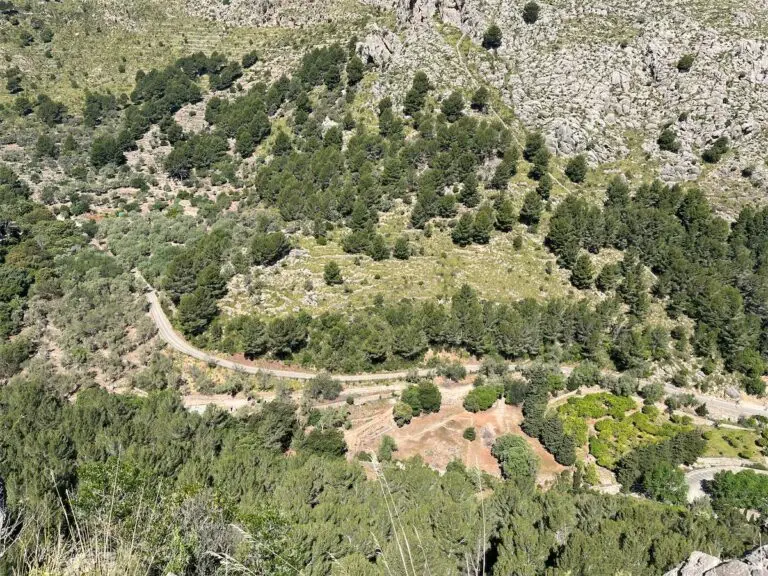In a series of articles, we will take you through the routes and climbs of some of the world’s most famous, spectacular, and arguably most challenging cycling climbs. In the first edition, we start with the Sa Calobra Mallorca climb.
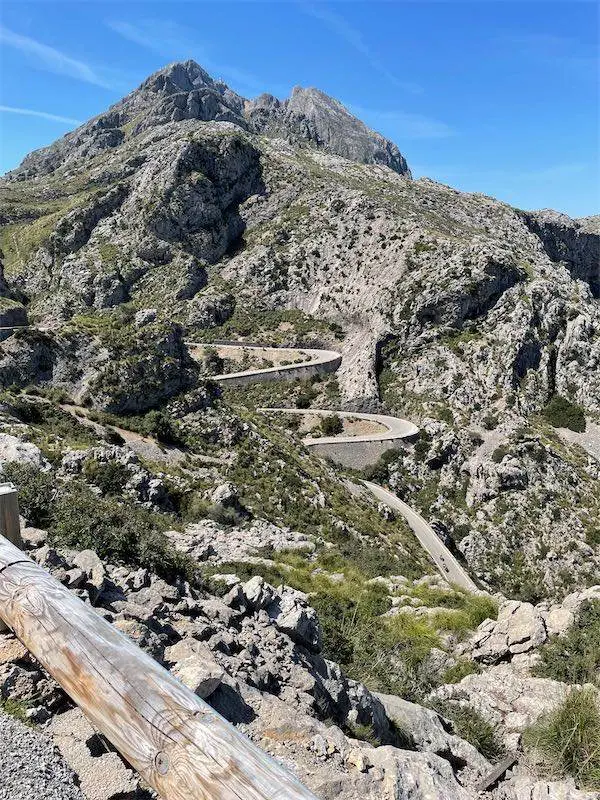
The Route to Sa Calobra
Our journey commenced with a Taxi from the capital city of Palma for just under an hour to the Orange Juice Man stop at the base of the Puig Major (Ma-10). We proceeded to Sa Calobra by climbing the Coll dels Reis at 2.5km over 6%.
Once you have ascended this short climb, the descent begins for 9.5km to the base of the Sa Calobra.
From there, you simply turn around, head back up and over, and return to the Orange Juice Man Shack again before the climbing continues past the aqueduct Gorg Blau to the top of Puig Major. From the top of the Puig Major, you can enjoy the long 14km descent down to Soller.
A short ride through Soller heading back to Palma will bring you to the Coll de Sóller (7.35km @ 6%) before descending and following the signs to head back to Palma.

Riding Sa Calobra and beyond
Let’s start with the fact that Sa Calobra is not a road or climb but a port town on the northern coast of Mallorca. The climb from town takes the road to Coll dels Reis which winds over and through the rock formations of the Tramuntana.
Over time, this road has come to be known by cyclists simply as Sa Calobra.
Sa Calobra (also known as The Snake) was created for tourists and not cyclists, despite being one of the most famous climbs in the world. The road, designed by Antonio Parietti, was constructed by hand, requiring over 30,000 cubic meters of rock to be removed from the mountainside.
History tells us that Parietti did not want to damage the terrain by blasting holes for tunnels. Instead, he conceived the ‘tie knot,’ the 270° hairpin that cuts into a rock arch below itself. The road was declared open in 1932 and has been considered a modern construction masterpiece.
That’s its history out the way, something to remember to tell your cycling buddies on the way back up. The only way to the bottom (other than by boat) is to descend the 9.5km from the top.
The climb gradient is a 7% average, and close to the top, the road performs a sublime 270° loop, twisting around and back under itself, thus creating the iconic hairpin bend we know as the ‘tie knot’.
It is a great descent! But with a few challenging turns here and there, you need to be focused. One of our group lost the back wheel, overcooking a corner.
Once you reach the bottom, there is a cafe for a coffee stop, or you can ride ahead to the town to take a look at the port and beach. For us, a few Cortados and a proper coffee (pure black) later, we commenced the climb.
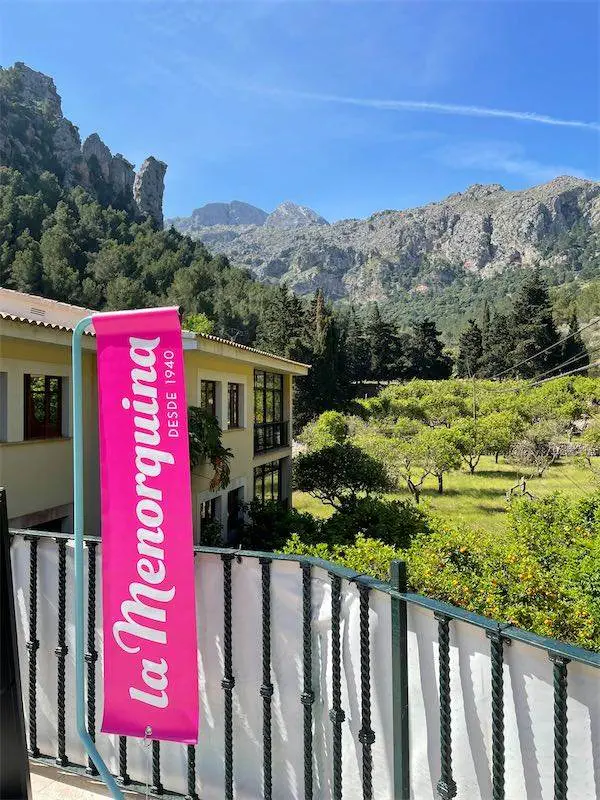

Starting the Sa Calobra Climb
The first 2 kilometers are relatively straightforward, which may give you the impression that you are in for an easy ride, but you’re not. Not long after, a few steeper sections make you consider what’s ahead; you need to pace yourself because there is much more to come.
One challenging part of the climb is to avoid playing chicken with oncoming coaches who know they are bigger than you. In my case, this caused me to slip in against the wooden barrier and scrape off a few layers of skin.
So, top tip, if there’s a bus coming down, don’t think it will slow down for you. Instead, it may be more prudent to stop momentarily and pull over to let it pass.
The hardest part is probably between kilometers 7 and 8. Here, the gradient reaches more than 10%, and if your legs are tired or you had too much Rioja and Tapas the night before, you will notice it.
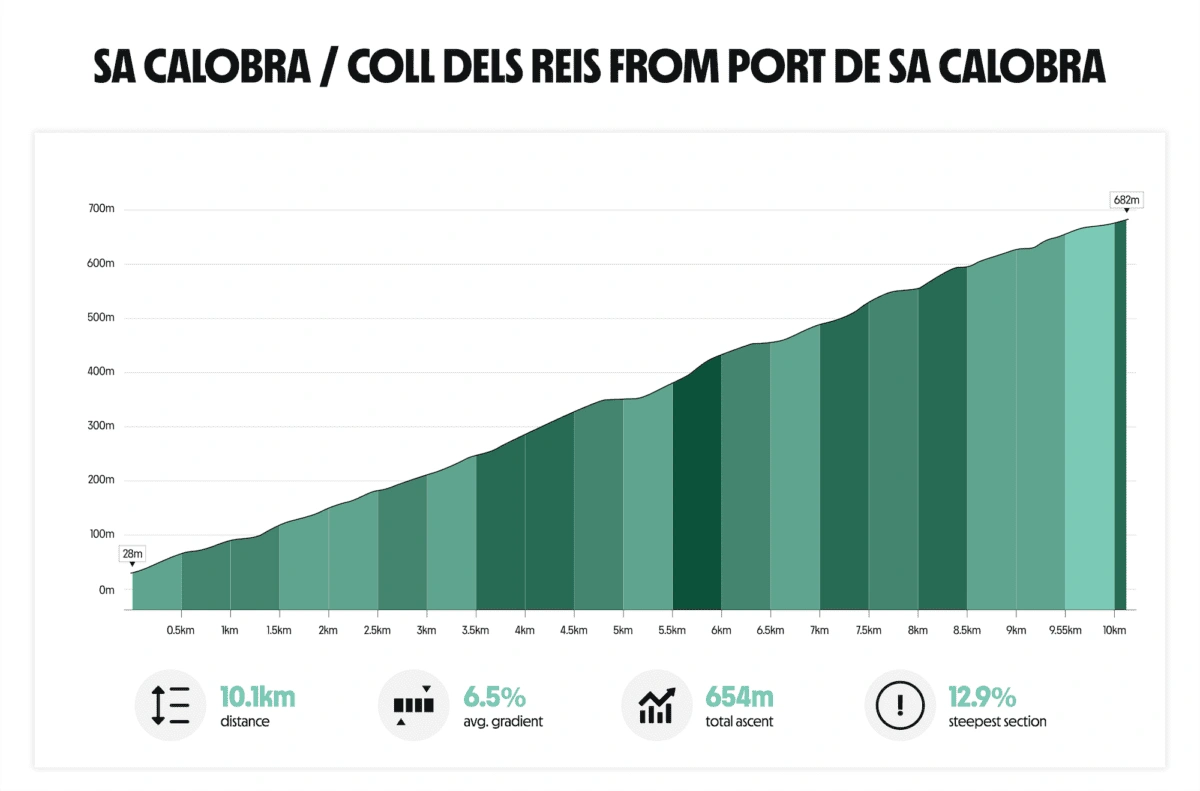
Once you reach the last few kilometers, looking at what you’ve achieved is a great motivator. Take in the beauty of where you’ve been, and look up to where you are heading.
Let’s be clear; this is not a climb of the gigantic nature of the Alps or the Pyrenees. There’s a reason why the pros train here and go up and down them two or three times straight after each other.
But what you get here is a beautiful climbing experience that you can tick off your list or use to prepare for a trip to the mountains of France (as we were doing in a few short weeks).
You will see some cyclists, eyes down, chewing their stems and not looking up. Lift your head, see the scenery around you, and remember, it is why we put ourselves through it.
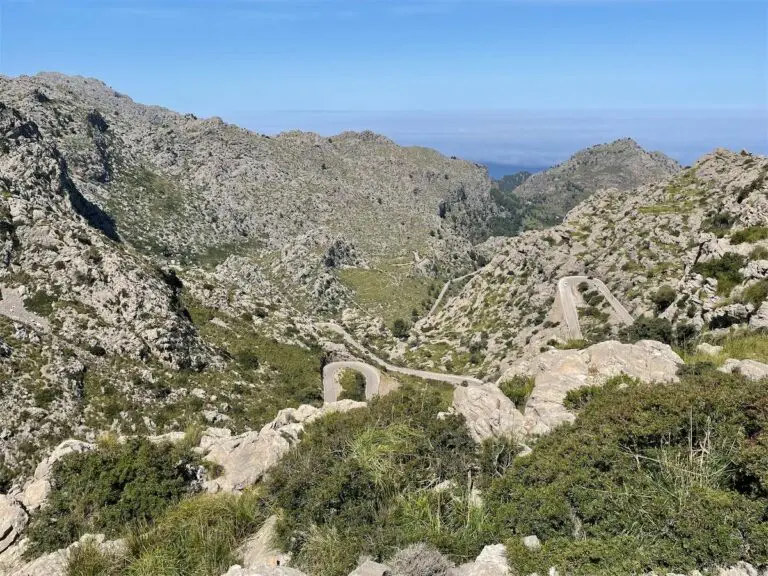
Over Coll dels Reis and to the Orange Juice Shack
Once at the top, you can stop at a cafe or head straight over the top and down the smooth descent back to the Orange Juice Shack. The main groups that stop here have come from Puerto Pollensa, and not many appear to be looking at climbing the Puig Major directly ahead.
We had no choice as we were heading back to Palma. They weren’t. Had we missed something here? Time will tell.
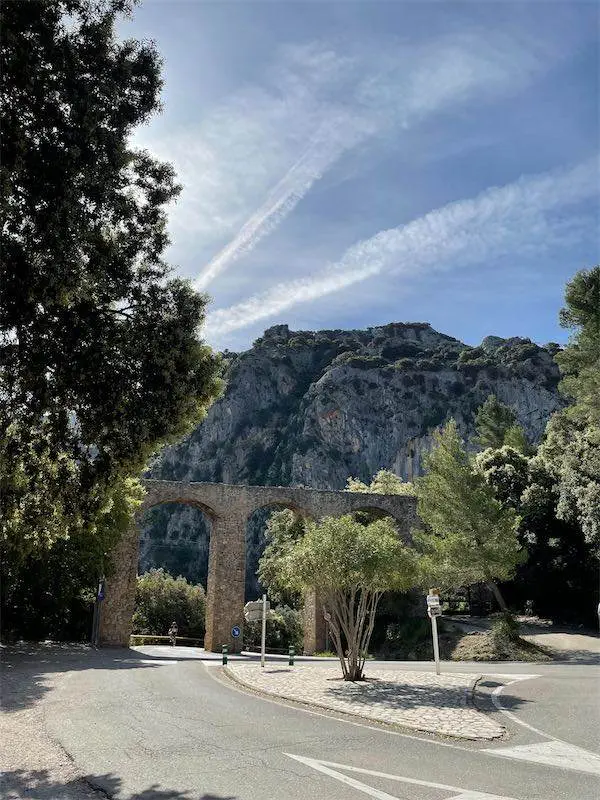
Up and Down Puig Major to Soller
Following refreshments, including a Baguette the size of your arm, we sit looking at the base of the climb ahead. We can’t put it off; time to go. The Puig Major – known as ‘The Pig’ – tops at 850m and is the island’s highest ascent.
Although only a Category 3, with an average gradient of 5.2%, the Puig Major (from Panta de Gorg Blau) climb has a few steep ramps.
Almost 250 meters of elevation to reach 850m above sea level at the tunnel where the climb ends. We discovered that it wasn’t as hard as it seemed in the earlier taxi ride. It was a good climb, with a flat section around the reservoir. Nothing too strenuous on the legs.
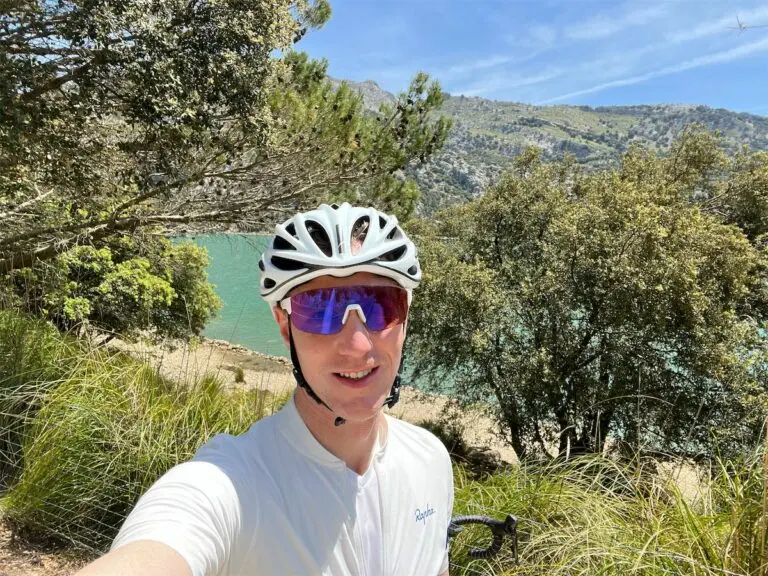
At the top, stop and take a breath or a photo, for what is to come is more than likely to be one of the finest descents you may ever make. You have 14km ahead, and coming up in the car felt windy and tight.
Coming down on your bike is the opposite, smooth and flowing, with great opportunities to let the brakes go and lean into corners confidently, keeping an eye on the road ahead.
Plenty of climbers are coming up ahead as you head down, and naturally, motorbikes will overtake. Still, on our day, it was relatively quiet for vehicles.
You will think, as we did, you’re glad you’re not climbing this way up the Puig Major, at the 14km and gradient of 6% and just whizzing down it. We will climb it this way, just not today.
The last time I remember a descent as enjoyable as this was back in the Alps, descending the Col de la Croix De Fer.

Coll de Soller and Ca’n Topa Cake
Once at the bottom, you skim round the outskirts of the town of Soller and head to the longer and more challenging climb up to the Coll de Soller (North) summit and heading south on the old road to Palma (Ma-11A). It has an average gradient of 6% over 7.4km and is a Cat 2.
We can absolutely vouch for it feeling slightly longer and more challenging than the stats suggest, as we forgot it was coming!
We came through a long tunnel in the taxi to get through the mountain, a tunnel you are prohibited from cycling through, so your only choice is that you have no choice; it is up and over.
The Coll De Soller is a relatively steady climb, and the first couple of kilometers are relatively uneventful. Then, at around 3km, the hairpin bends start, and boy, do they start! There were so many of them that we stopped counting.
The fact we were running out of liquids was more critical. Only one rider had a full bidon of water to share, but due to the wrong gearing on the hire bike he decided to spin ahead and leave us.
I’m convinced we could see a trail of water drops on the road to rub it in. Anyway, some more spectacular views took our minds off the thirst while still following the twisting and turning road.
At the top of the climb is Ca’n Topa, a lovely cafe and home to its warm and welcoming British owners, Paula and Damian Murphy. They lovingly prepare some of the finest cakes, just the thing after a few challenging climbs.
Along with other essentials for cyclists who have just climbed a mountain they completely forgot was ahead – Coca-Cola and an Energy bar.
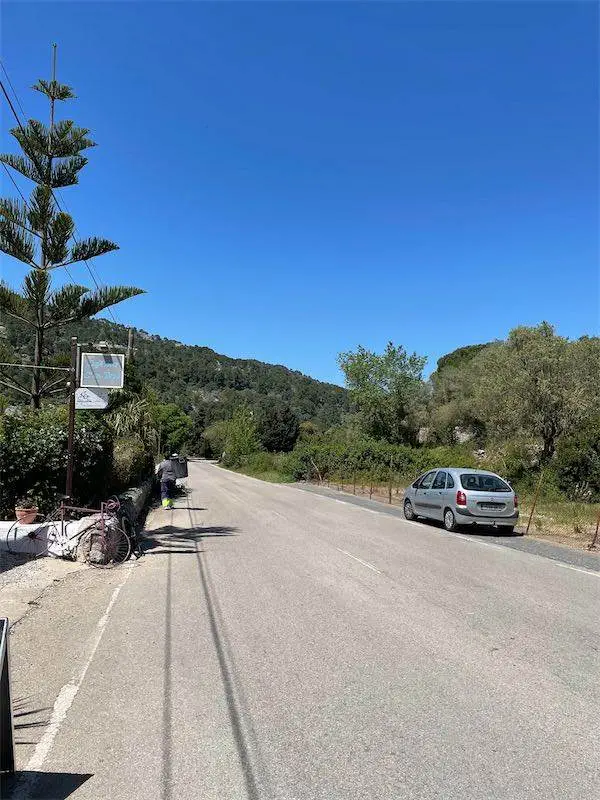
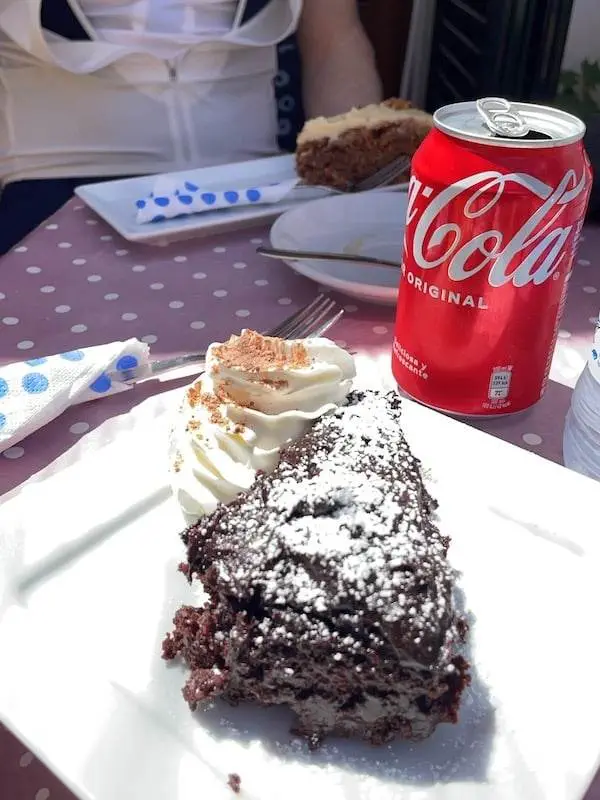
Our rider sat with his coffee and cake and then informed us of a natural spring just after the middle section where you can stop to refill your bottles. This detail was not helpful because we didn’t know and missed it.
And secondly, this explained why a group of cyclists congregated at this section, and we wondered why. Now, I never eat cake, but I ate a beautiful slice of chocolate orange cake for the first time.
However, later on, on the way back to Palma, it decided to remind me why I don’t eat cake when riding. Nothing a hose down didn’t sort out at the end.
Following a short, twisty descent down the east side of the Coll de Soller, where the road is narrow, you can now follow the signs back to Palma for a straight sling ride shot back to the city center.
What a fantastic day out cycling in Mallorca. And back home just in time for Tapas and Cerveza!
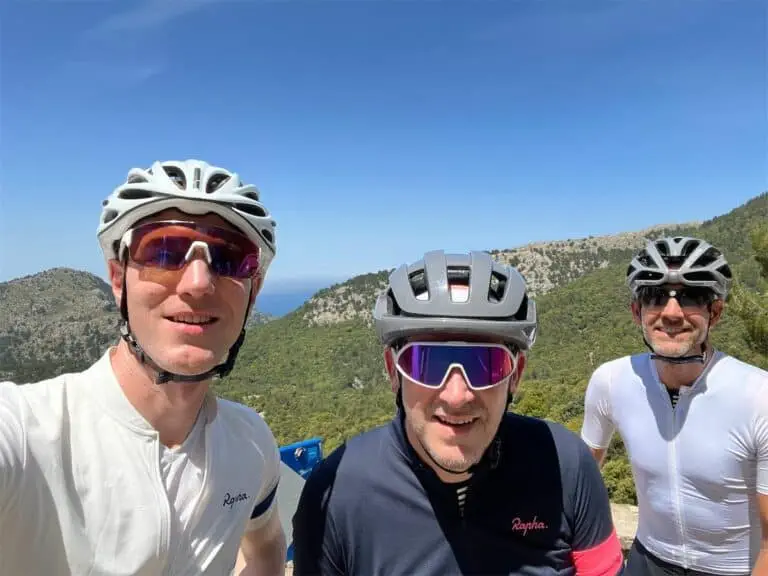
Cycling Sa Calobra and beyond – climb & numbers
- Distance: 80 KM
- Elevation: 1,690 metres
- Calories Burned: 3,200
- Average Temp: 26c
- Cans of Coke: 1
- Slices of Cake: 1
- Amount of Vomit 1 Slice of Cake + 1 Can of Coke
Is Sa Calobra Mallorca worth a visit?
In a word – YES! In our opinion, it’s Mallorca’s best climb. Whether it’s the 26 hairpin bends, the ‘Nus de sa Corbata’ (aka the Tie Knot), or riding in and around the Tramuntana mountains.
Sa Calobra and its neighbors are well worth the visit – it is a ride that you will always remember with fondness, and for sure, the Sa Calobra art print capturing the beauty of the perfect climb will be going up on the gallery. I want to be reminded of this ride.
Is the Sa Calobra road difficult?
As always, it’s all about preparation. It is not a monster climb like some of the Alps giants. But it has its moments, with gradients over 10% at some points.
But its beauty keeps you company all the way up, the weather is amazing, and you are normally never too far away from a fellow rider for company.
